We recently connected with Maylene White and have shared our conversation below.
Maylene, thanks for taking the time to share your stories with us today What was it like going from idea to execution? Can you share some of the backstory and some of the major steps or milestones?
I sat in front of the computer looking at an opening in a prestigious flower farming school. Previously, for a few years, I’d occasionally get an ad to “find out more.” But this time, it felt different. After 28 years in higher education, I could feel my life shifting. The impulse I felt from my gut was so strong, that it quickly enveloped my whole being and I clicked “enroll here.” I went to my department head the next day to let her know that I couldn’t teach the next semester. Thinking back, my grandmother took me to Butchart Gardens near Victoria, British Columbia when I was seven. From then on, I was hooked on plants. Specifically, flowers. The beauty, variety and, because I’m a dancer, the movement of flowers has always captured my heart. I would often look at the art of landscaping and planting much like choreography. When we bought our first home, I immediately began redesigning the flower beds and scrounging for plants from anyone that was willing to give me a plant start. I loved giving away bouquets from flowers that I grew. In the last decade or so, there has been a movement to bring locally grown flowers into the community. This idea spoke to me. I thought, “I live on 2/3 acre and I could grow flowers right here.”
In my small city, there was nothing like this—a suburban farm where someone could get seasonal, locally-grown flowers. I decided to seize the opportunity in front of me. I quickly learned that flower farming and growing flowers are NOT the same thing. For eight weeks I dove deep into flower farming school. There was a huge learning curve. Succession planting, irrigation, starting from seed, vase life, stem length—a whole host of things I hadn’t thought of before. Even as a master gardener, I realized that flower farming is not for the faint of heart. And then there was the business side of things. Marketing, sales channels, and most importantly, licensing. I found out I not only needed a state license, but also a city license. And since this was a “home-based” business, there were additional hurdles required by the city. I had to secure a “conditional-use” permit, which required that I have an open hearing for all neighbors within a 500 ft radius, and then I had to present those findings/concerns to the planning commission before approval. Many small farmers fly under the radar, but I wanted a sense of legitimacy from the beginning. Both on a professional level and to galvanize my personal commitment.
The first big test was Mother’s Day. I had planted around 800 tulips in anticipation of the holiday. I sold out in a week. That weekend, I made 60 tulip and lilac bouquets. During the summer, I offered two sessions of six- week bouquet subscriptions. My goal was at least 10 subscriptions. I got 15. I wanted to offer buckets of flowers for DIY events. I was hoping for at least one event the first season, and ended up providing flowers for four DIY weddings. I had a goal to teach one dahlia workshop, ending up teaching two. I quickly realized there is an interest and need within my local community for my flowers, and the opportunity for continued growth is only shaped by how much I want it to grow. What does success look like? Do I have to be “the next big thing?” Is being a contributor to the local community enough? Do I want time to visit my grandchildren? These have all been questions floating around in my mind.
There’s a trend in flower farming right now to be not only a farmer, but a social media influencer, writing a book, creating large online workshops and endorsements. Constantly producing products, either agriculturally or online. If I was younger, I might feel differently, but I just want to grow organically and not lose myself in the process. I’m a firm believer of quality over quantity. The journey thus far has been an incredible one. I’ve met flower farmers from across the country. And the outpouring of support locally has been humbling. The most impactful was a note telling me that they gave the flowers they bought from me to a family member that they hadn’t been in contact with for quite some time, which opened the door to reconnect, and that they were extremely grateful for the ability to share these bouquets. Flowers did that!
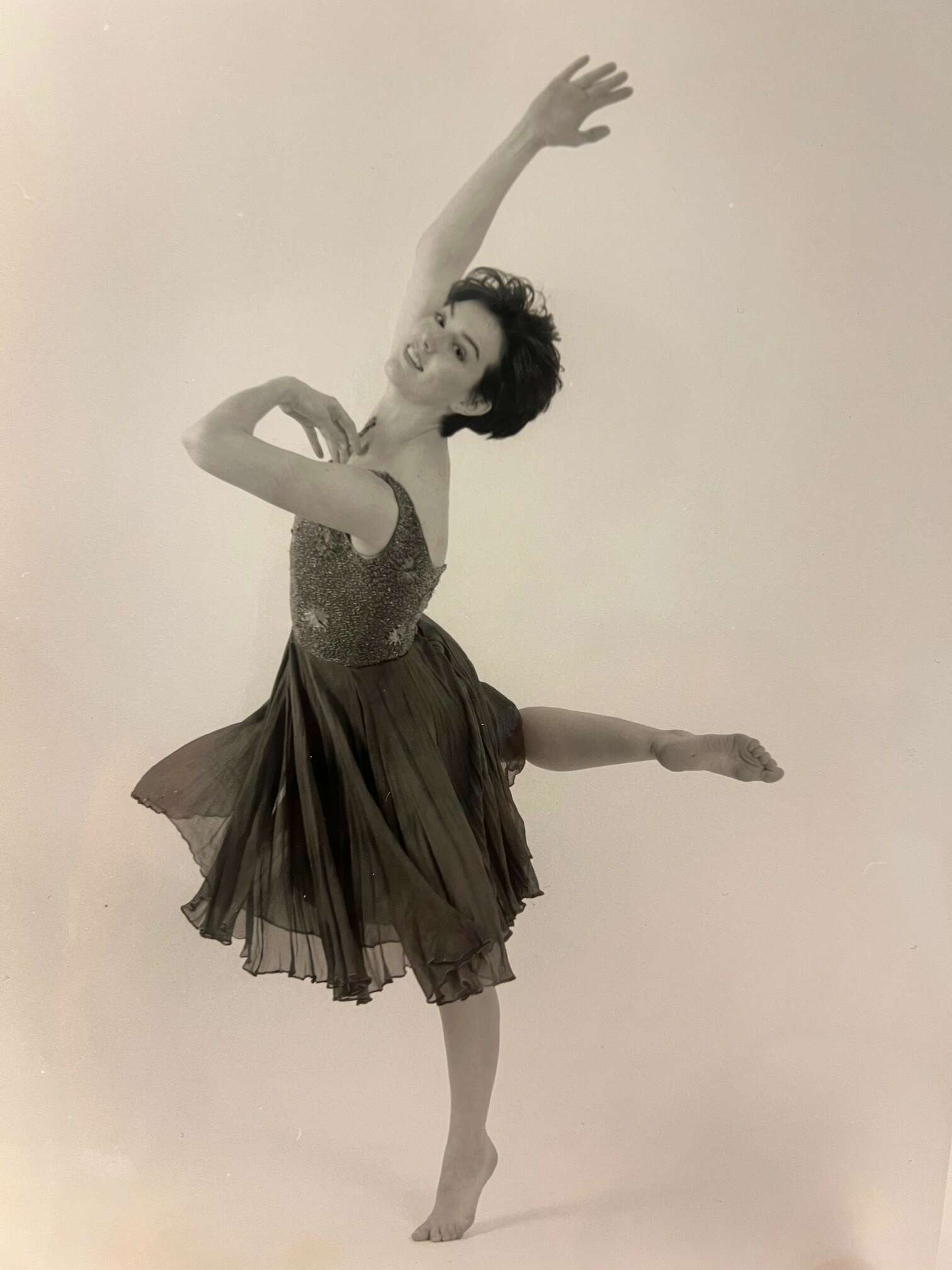
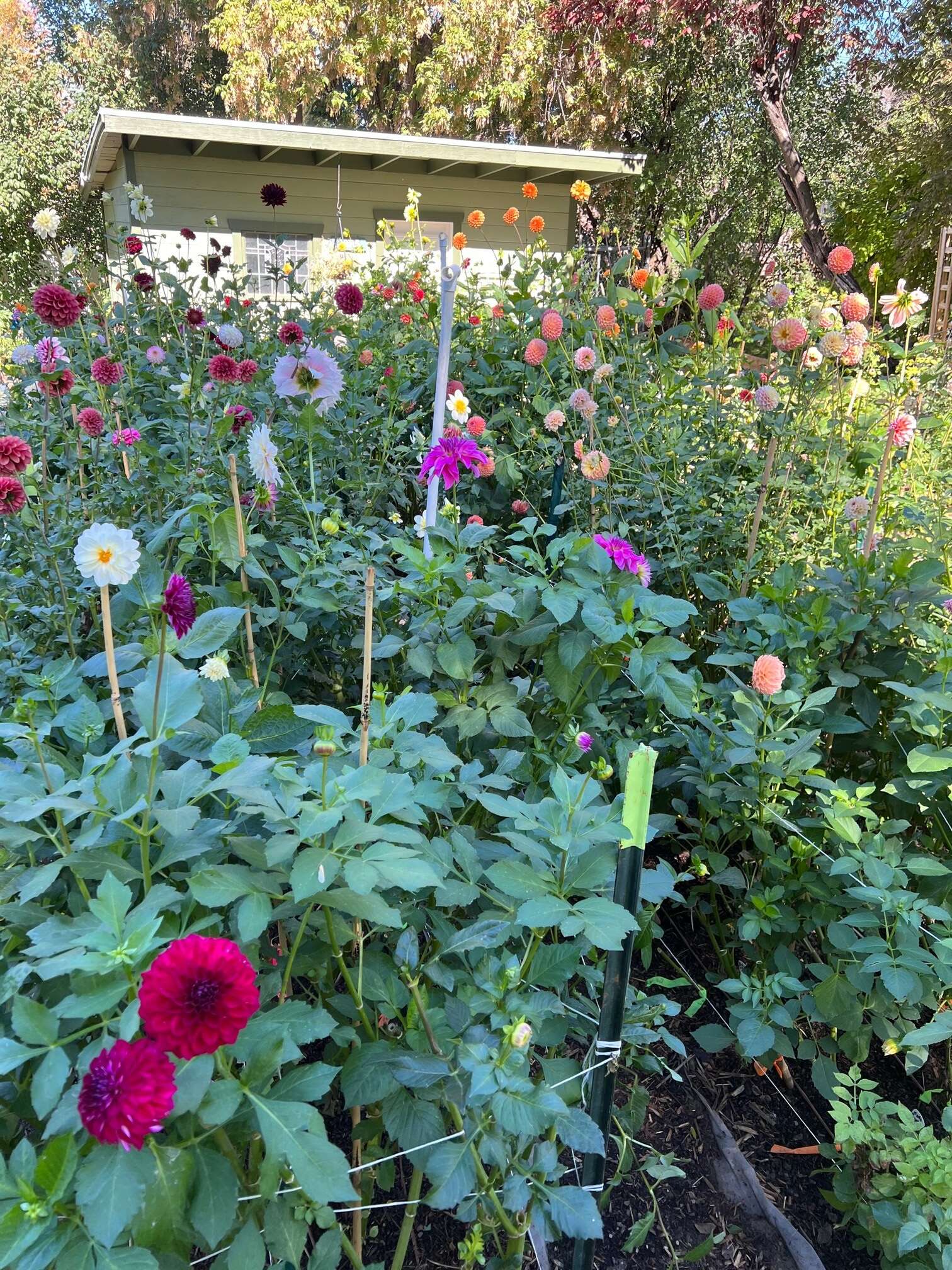
Maylene, before we move on to more of these sorts of questions, can you take some time to bring our readers up to speed on you and what you do?
My dance career spanned over three decades, both as a performer and dance educator, mostly in higher education. All the while, I fostered my love for flowers. I think I’m up to 130 roses currently. Dancing Cricket Flower Farm was born out of both of those sides. We are considered a micro-farm, since we are less than an acre. The farm provides seasonal fresh-cut flowers to the public, May to October. We offer CSA subscription sessions (community sourced agriculture), DIY flowers for event work, Mother’s Day bouquets, pick-your-own appointments, garden/dahlia workshops and bouquets by availability. What sets Dancing Cricket apart is that we are embedded right in the community. Most flower farms tend to be rural, because that is where the land is. We are right in the heart of Holladay city. Buy local, stay local. I also think our branding is unique. Most flower farms have similar logo styling. Ours is different. It’s fun, cheerful, friendly and full of color. It’s a reflection of who I am. Let’s just say I talk with my hands. A lot. When I’m out and about representing the farm, I always make a concerted effort to always stay in my color palette, which includes purple. It’s my favorite color. All shades!
I get asked where the name comes from, and since I was little, my nickname has been Cricket. I was always bouncing around. The name was given to me by my grandmother who introduced me to gardening. She had beautiful roses, dahlias, and hydrangeas. And of course, I’m a dancer. Voila! Dancing Cricket Flower Farm was born. Did I mention I love the color purple?
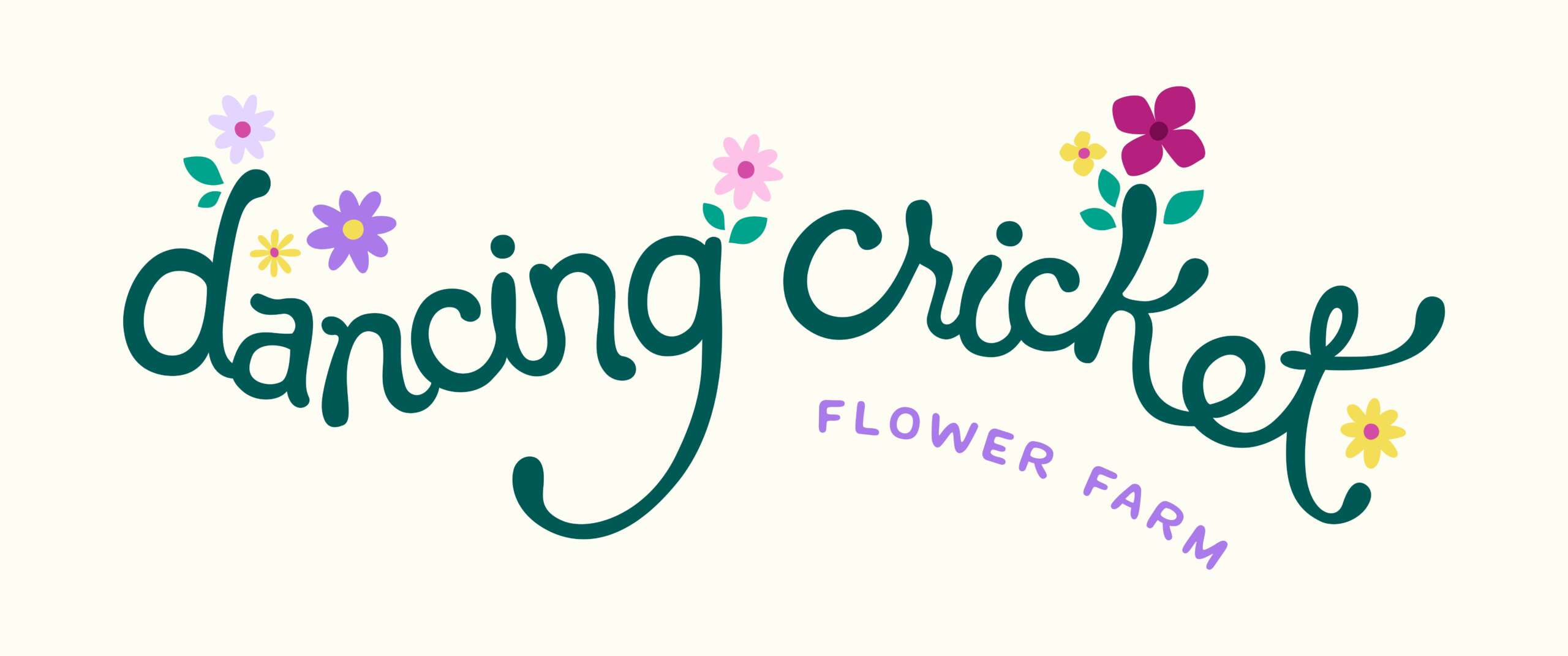
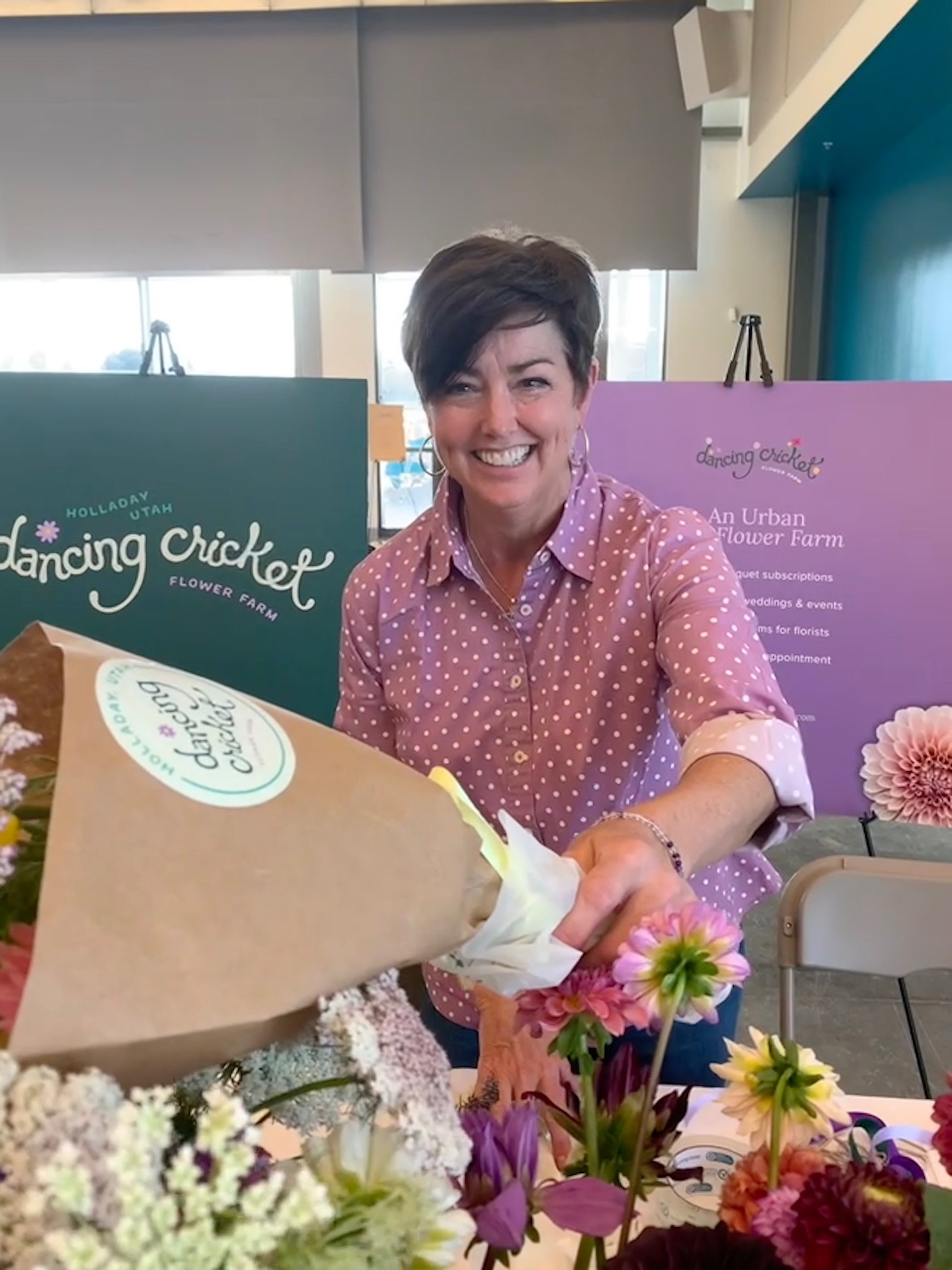
Have you ever had to pivot?
About nine years ago, I started noticing joint issues, accompanied with the occasional injury. Each time I went into the orthopedist, he responded, “well, you’re not 25 anymore.” It was frustrating. I knew this was different. As a dancer and runner, I was accustomed to listening to my body. It continued to get worse, and then one morning, I could not move. I laid in bed frozen. It was scary and baffling. Eventually, I was able to move around and get up. Then, of course, I began googling symptoms. I asked my doctor for a particular battery of blood tests. He consented, but thought I was crazy. Turns out, I wasn’t. The blood marker for rheumatoid arthritis was off the charts. I was able to get into a rheumatologist, who subsequently confirmed the diagnosis. At the time, I was struggling to teach my dance technique classes at the university. Now I knew why. For the next few years, it was a constant struggle to find the right combination of medications that worked, and I focused on more dance academic classes. Some days were fine, other days I couldn’t open a door, walk to the car, cut my food. I had to rethink what I would be able to do long term. I’m now in the “permanently disabled” category.
So what did I do? I started a flower farm, naturally—physical labor! But seriously, I have learned to work smarter, not harder. I pay more attention to protecting my joints. I took up swimming in place of running. I’m grateful for a rheumatologist who understands and is committed to helping me keep my mobility to the highest degree possible. I’m on my 10th medication combination. It’s a constant struggle. I’ve gotten better at asking for help, but there’s definitely still room for improvement in that regard. I really appreciate the days when everything works well. And when it doesn’t, it’s okay to rest, or just don’t do as much.
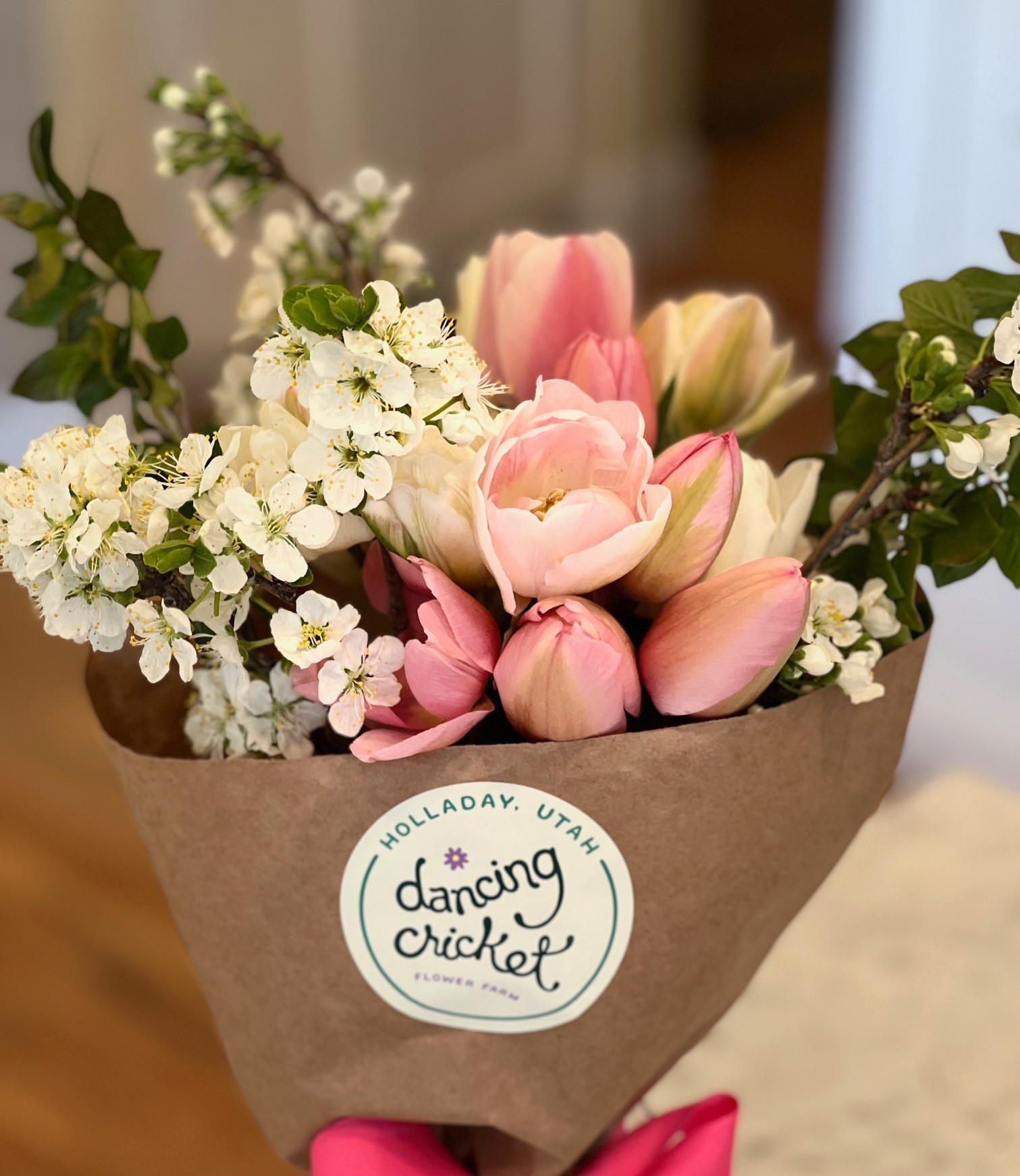
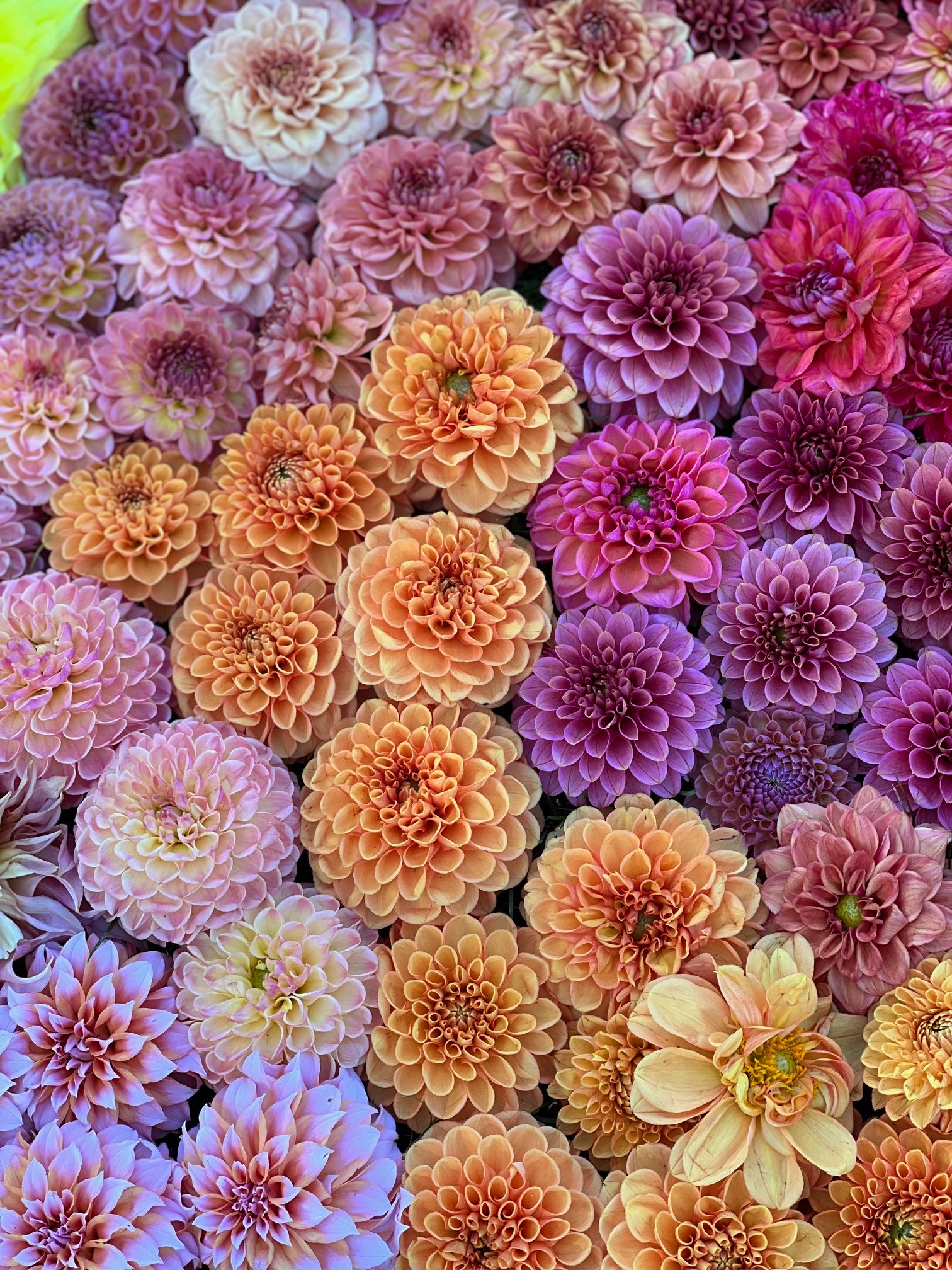
Where do you think you get most of your clients from?
I know there’s a huge social media push. And I think it’s important, and I most definitely could be better at it. But I have had great luck with “word of mouth” advertising. Maybe it’s because my business is targeted to the local community. I’ve made an effort to get involved in community events and because of my recognizable branding, people remember and recommend me to friends that are looking for fresh-cut flowers. I love the fact that customers are now recommending me to their friends and also becoming repeat customers. It’s validation of a good product, good service, or hopefully, both!
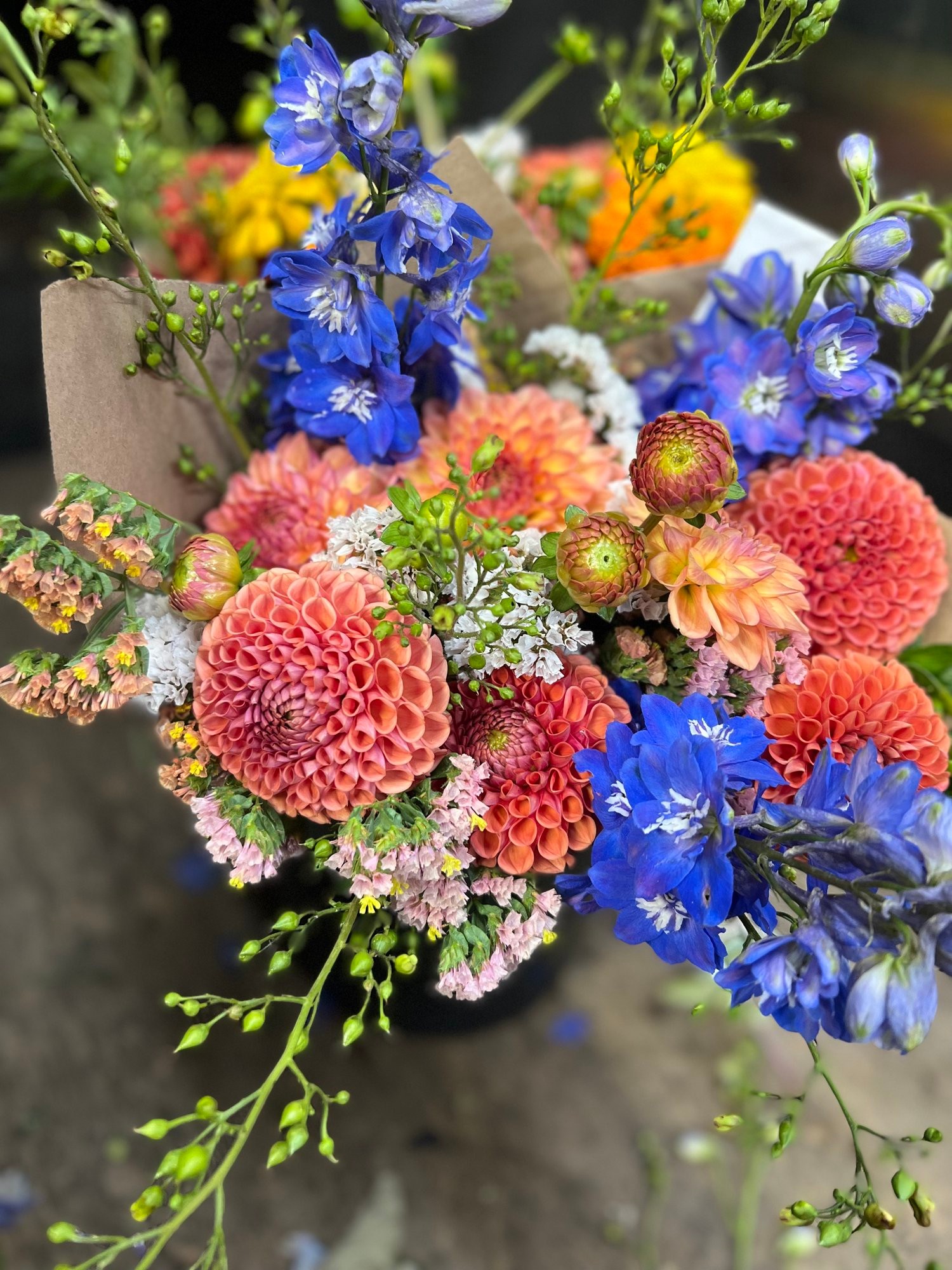
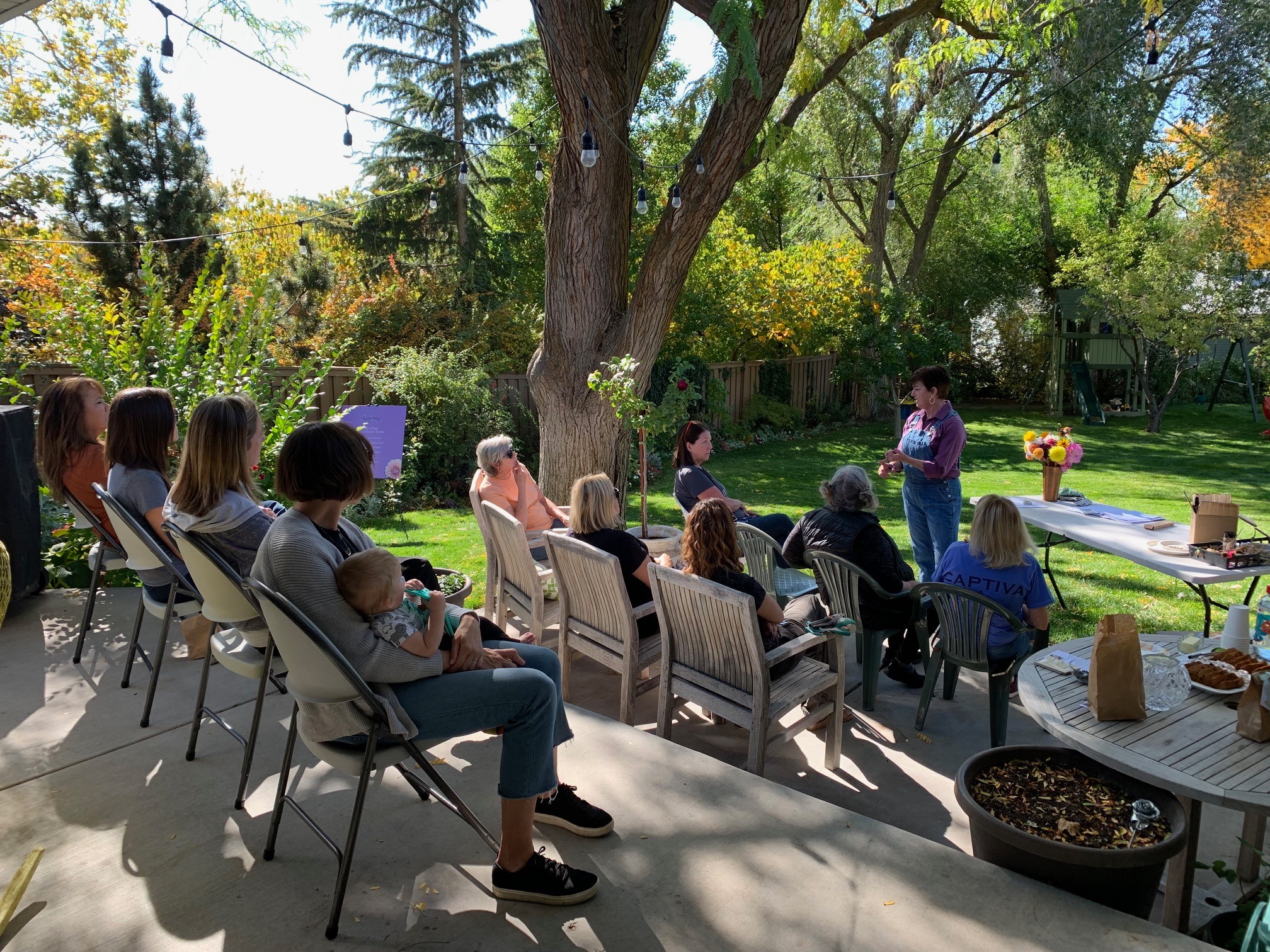
Contact Info:
- Website: dancingcricketflowerfarm.com
- Instagram: @dancingcricketflowerfarm
- Facebook: @dancingcricketflowerfarm
- Email: [email protected]


